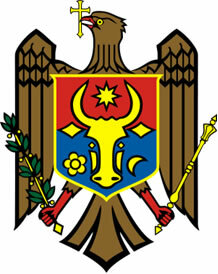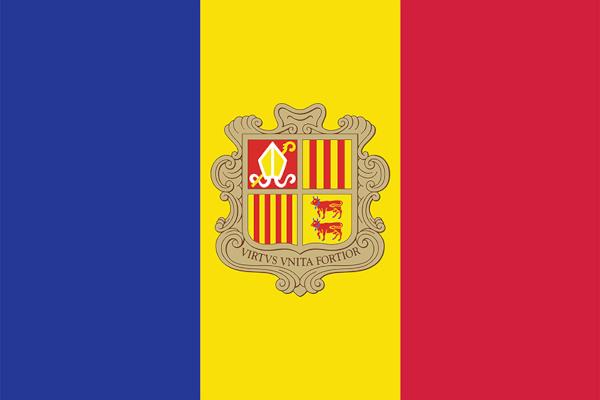neo-nazism it is the ideology that rescues elements of the Nazism and appeared after the Second World War. Neo-Nazis cling to Nazi ideals, giving them a new look in some cases, but use those ideals to promote the hatred against different groups in society, such as blacks, Jews, Catholics, feminist women, anarchists, communists etc.
Neo-Nazism emerged in Europe within the radical right wing and was formed by former Nazis who survived the defeat of nazism in 1945. This ideology proliferated over time in many groups and associations, which operated in the underground, but also entered professional politics with the formation of parties that gathered neo-Nazis. These parties used softer language to mask Nazi influence.
Countries like Germany, Italy, France and England faced a big growth of these groups, which began to expand to different parts of the world. Currently, there are neo-Nazi movements on all continents, with the United States being one of the countries in which this movement has had great growth. According to the Southern Poverty Law Center, an institution that monitors radical groups and organizations in the United States, there are currently around 121 neo-Nazi groups in the country.
|1|.Neo-Nazis rescue numerous elements of Nazism, such as the idea of supremacyracial (the belief in the supposed “superiority” of the Aryans) and the anti-Semitism, therefore, there is a very strong hatred of Jews in these groups. Furthermore, neo-Nazi groups are characterized by a ultranationalism, which leads them to take xenophobic positions.
Neo-Nazis are also extremely homophobic, in addition to taking positions misogynists (especially against openly feminist women) and maintain positions against anarchist and communist groups. exalt the adolf hitler and take negative opinions regarding the Holocaust.
Also access:Was Nazism on the left or on the right?
Nazi ideology

The cult of Adolf Hitler is one of the central elements of the neo-Nazi ideology.**
Nazism was a political movement that emerged in Germany in 1919 and was the result of the collapse that the country was facing after the First World War. The humiliating defeat in the war and the strong economic crisis that hit the country made room for a populist discourse of the extreme right to gain strength in the country.
Before World War I, countless ultra-nationalist, anti-Semitic and militarist ideals were in evidence in German society, but with all the chaos in the country, these ideals gained strength. Within this context, historian Richard J. Evans states that:
It was in this atmosphere of national trauma, political extremism, violent conflict and revolutionary upheaval that Nazism was born. […] National humiliation, the collapse of Bismarck's empire, the triumph of social democracy, the threat of communism, all seemed to justify for some the use of violence and assassination to implement measures that pan-Germans, anti-Semites, eugenicists and ultra-nationalists had been defending since before the turn of the century for the nation itself. to recover.|2|
The Nazi Party came up with the name of National Socialist Party of German Workers (a strategy to gain members) and came to be led by Adolf Hitler in 1921. After an attempt to seize power in Bavaria failed, Hitler was arrested and, after his release, resumed rebuilding the party, which came to power in Germany in 1933.
The Nazi ideology encompassed several elements, such as:
leader worship: Adolf Hitler was venerated as the only one possible to save Germany from the economic crisis.
anti-bolshevism: Nazism was an extremely anti-Marxist party and this was expressed by Hitler in speeches and writings. The term “anti-Bolshevism” refers directly to Nazism's aversion to Soviet communism.
Anti-Semitism: the Nazis claimed that the Jews were largely responsible for all the misfortunes that had befallen Germany.
Supremacyracial: the Nazis believed that the Germans, named as Aryans, were a biologically superior race and that, therefore, they had more rights in relation to other races.
anti-liberalism: Nazism despised liberalism, whether in the form that guaranteed individual freedoms and the functioning of the democracy, or liberal capitalism (seen as a Jewish-dominated area, therefore, perverse).
To access more detailed information about the historical origin of Nazism, the great historical events involving the party and a broader explanation of its ideology, we suggest reading of this text.
Do not stop now... There's more after the advertising ;)
Read too: Final solution: the Nazi plan to exterminate the Jews in Europe
Holocaust
Anti-Semitism in Nazism was a direct influence of German society, which since the 19th century had cultivated such ideals. Adolf Hitler himself became a staunch anti-Semite when he lived in Vienna, Austria. The Nazis saw Jews as the root of all the evil that had befallen Germany at the beginning of the 20th century.
The Nazis believed in several conspiracy theories, which were used to justify their hate against jews. Thus, the Nazis believed that the German defeat in the war was part of a “stab in the back”, a conspiracy in which the war was part of a conspiracy of the Jews to weaken the country. Furthermore, they said that communism was part of an international Jewish conspiracy. This last conspiracy theory was clearly represented in a very popular book in Germany at the time called “The Protocols of the Elders of Zion”.
When they came to power, the Nazis gradually began to implement discriminatory measures against German Jews. As a result, Jews began to lose their civil liberties and rights and began to be treated as “second class” citizens. Over time, they became targets of violence, as happened in night of crystals, an event in which thousands of Jews were attacked in Germany in 1938.
The result of all this hatred promoted by the Nazis against the Jews was the Holocaust. Hitler had plans to exterminate Europe's Jews, but only after the war. the influence of HeinrichHimmler and ReinhardHeydrich made Hitler authorize the extermination of Jews with the war in progress.
Jews in places under the Nazis were persecuted, imprisoned, turned into slave laborers and executed. At stages of carrying out the Holocaust happened first with the imprisonment of the Jews (mainly the Poles) in ghettos and concentration camps. Later, death squads were used to promote mass shootings. These extermination groups were called Einsatzgruppen and acted mainly in Soviet territory under German rule (Baltic countries, Belarus, Ukraine and Russia). The action of these extermination groups was responsible for the death of a million Jews by the end of the war|3|.
When this method of execution proved to be limited, the Nazis chose to use a means that would allow them to extend the execution of people. Extermination camps were then built (six were built), which had chambersingas to kill people from the use of carbon monoxide or Zyklon B. At the end of the war, the horrors of the Holocaust were responsible for the deaths of six million Jews.
Read too: Main Nazi concentration camps
neo-fascism
In addition to neo-Nazism, many historians and political scientists debate about the neo-fascism, the current manifestation of policies that resemble Italian fascism. The debate over neo-fascism, however, is much broader because fascism and its current representations are complex.
O fascism it is a very malleable political ideology, adapting to different political realities and manifesting characteristics that can vary from one scenario to another. To access more detailed information about fascism and neo-fascism, we suggest reading of this text.
Neo-Nazi groups in Brazil
Here in Brazil there are also neo-Nazi groups. The concentration of these groups is extremely high in the regions Southeast and South, especially in the states of Sao Paulo, Paraná, SantaCatherine and RiverGreatofSouth. Neo-Nazi groups in Brazil incorporate the basic elements of neo-Nazism, such as hatred against blacks, homosexuals, Jews, etc. In addition, neo-Nazis also focus their hatred on migrants from other regions of the country, especially those from the Northeast.
|1| Hate Map. To access, click on here [in English].
|2| EVANS, Richard J. The arrival of the Third Reich. São Paulo: Planet, 2016, p. 119-120.
|3| SNYDER, Timothy. Lands of Blood: Europe between Hitler and Stalin. Rio de Janeiro: Record, 2012, p. 237.
*Image credits: DM-Studio and Shutterstock
**Image credits: Igor Golovniov and Shutterstock
By Daniel Neves
Graduated in History


